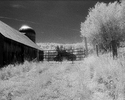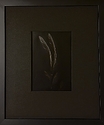Jarin Blaschke
Member
Hello:
I've been doing this for 23 years, but I am embarrassingly ignorant as to where selenium toning can safely be put in the printing chain.
For ages, my only darkroom access has been in the form of rental darkrooms, where toning is not allowed. If I wanted to tone a print, I'd fully, archivally wash and dry the prints at the darkroom. Later, at home, I'd soak, then tone and archivally wash the print all over again. I seem to have a distinct memory of being told that selenium toner will react adversely with residual fixer (staining, or eventual stains) and a thorough wash between the steps is necessary. I now question this memory.
I am now building a simple 8x10 contact-printing darkroom at home and can tone at any stage I want. As part of this development, I've lately read darkroom procedures where people simply include the selenium as part of the processing chain, before the big wash.
Is this right; can a print safely go right from the fixer tray to the toning tray? Or from fixing tray to water holding tray to toning tray??
I'd like to merge the ilford fixing procedure (one fixing tray, strong and brief) with selenium toning without necessitating two long washes if at all possible. In addition to the time and inconvenience, we in California are still in a drought. Of course archival stability is still paramount.
Thanks in advance,
Jarin
I've been doing this for 23 years, but I am embarrassingly ignorant as to where selenium toning can safely be put in the printing chain.
For ages, my only darkroom access has been in the form of rental darkrooms, where toning is not allowed. If I wanted to tone a print, I'd fully, archivally wash and dry the prints at the darkroom. Later, at home, I'd soak, then tone and archivally wash the print all over again. I seem to have a distinct memory of being told that selenium toner will react adversely with residual fixer (staining, or eventual stains) and a thorough wash between the steps is necessary. I now question this memory.
I am now building a simple 8x10 contact-printing darkroom at home and can tone at any stage I want. As part of this development, I've lately read darkroom procedures where people simply include the selenium as part of the processing chain, before the big wash.
Is this right; can a print safely go right from the fixer tray to the toning tray? Or from fixing tray to water holding tray to toning tray??
I'd like to merge the ilford fixing procedure (one fixing tray, strong and brief) with selenium toning without necessitating two long washes if at all possible. In addition to the time and inconvenience, we in California are still in a drought. Of course archival stability is still paramount.
Thanks in advance,
Jarin





